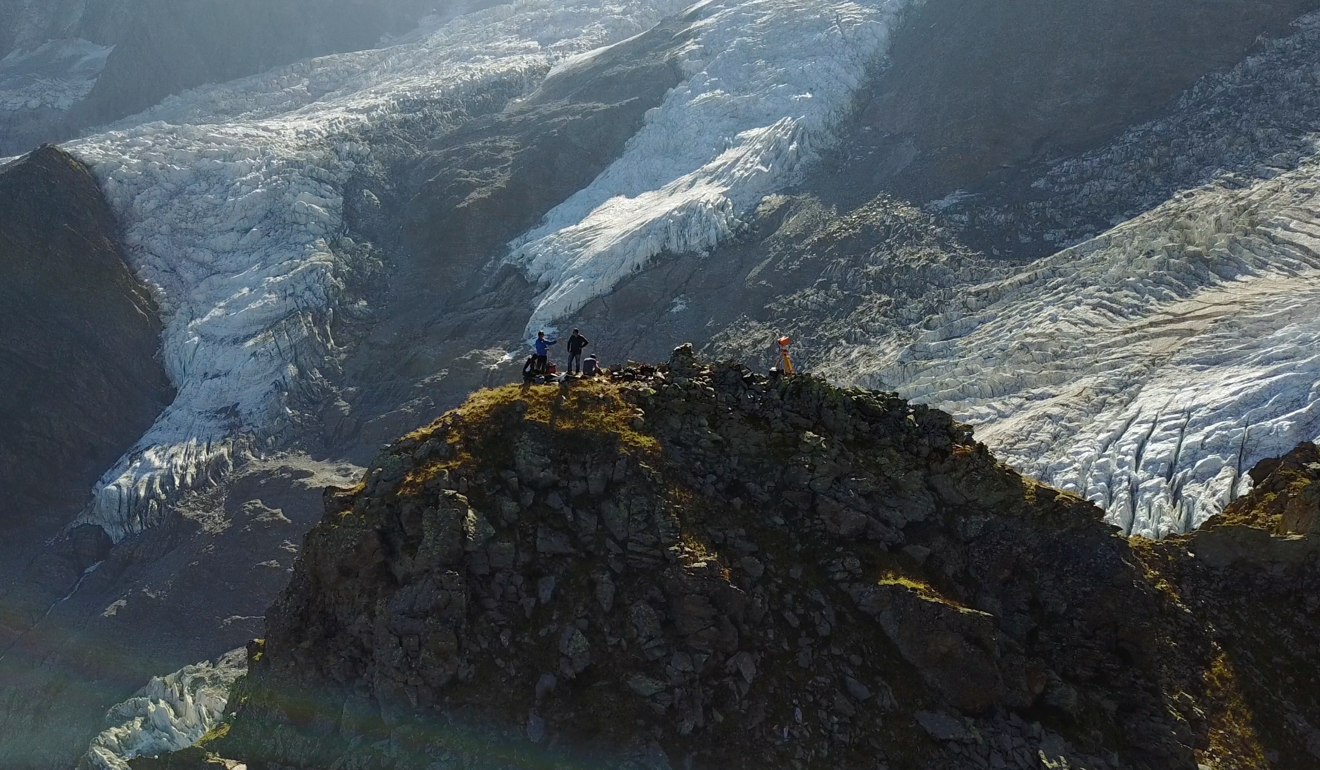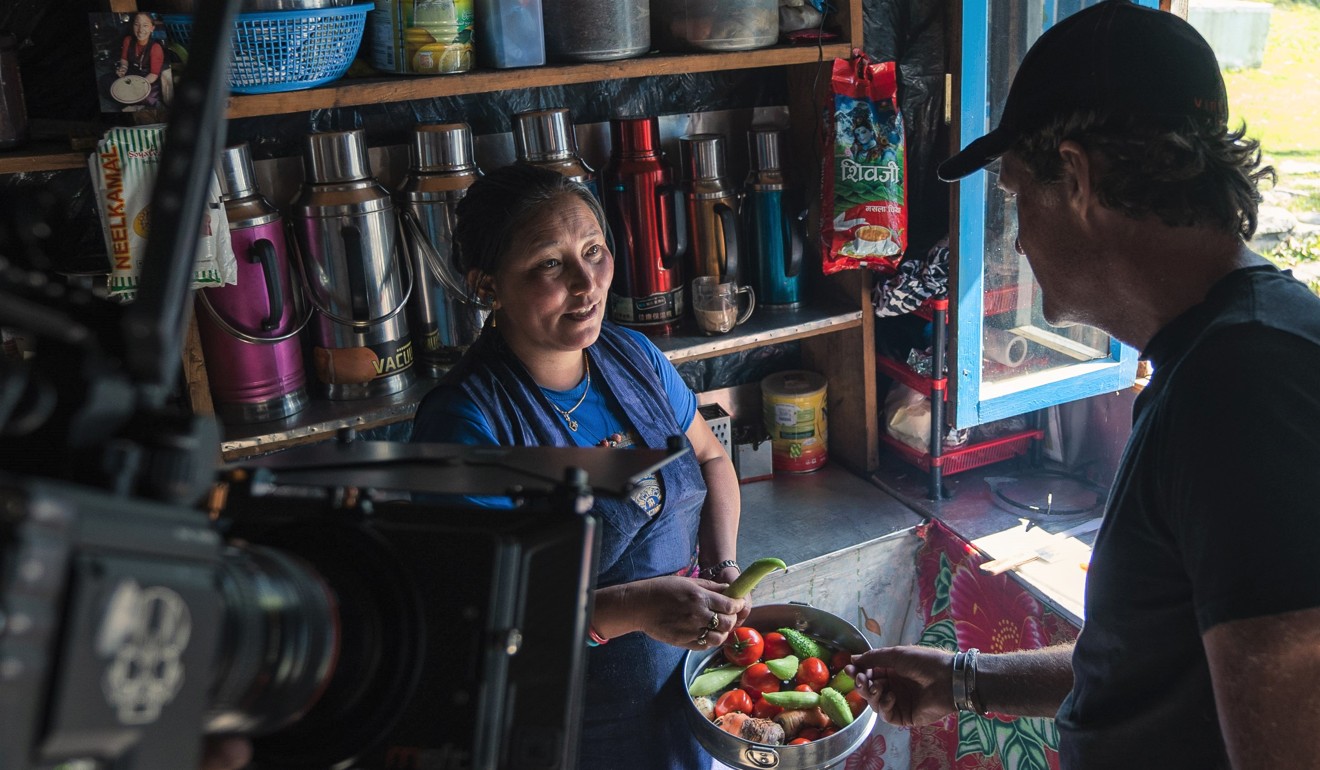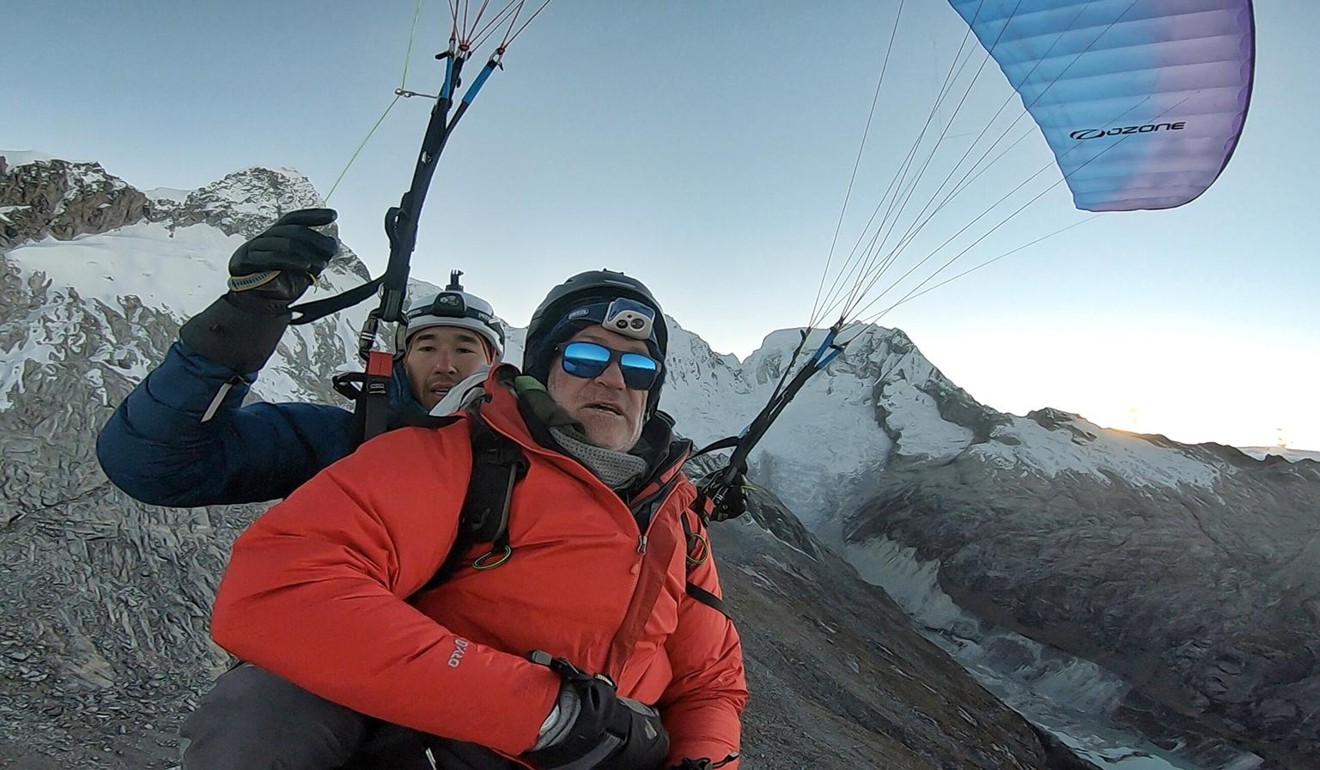
Why Craig Leeson wants Trump to watch his new climate documentary on melting glaciers
- The Last Glaciers, which traces the vanishing snowlines from Asia to Antarctica, is Leeson’s second film highlighting the grim effects of climate change
- While young activists such as Greta Thunberg offer hope for the future, big business and the US President need to be involved in the cultural shift, Leeson says

A year after releasing A Plastic Ocean , an award-winning documentary about the disastrous effects of disposable plastic on the world’s oceans, Craig Leeson turned his attention to a different project.
In 2017, the Australian and long-time Hong Kong resident went filming in the Alps to focus on extreme alpine sports – but when he found out about the work of a group of French scientists measuring ice deep inside the glaciers, he was drawn back to the mission of shining a light on the perils of climate change.
The Last Glaciers , scheduled to hit the festival circuit this summer, traces the vanishing snowlines in Asia, Europe, South America and Antarctica, in a stark global odyssey that highlights how human activity has wreaked havoc on the environment.
“[The scientists] have been able to ascertain how the atmosphere has changed over the past 800,000 years,” said Leeson, a journalist who has reported for media outlets including the BBC, CNN and Al Jazeera over a 35-year career.

“It’s the simplest way to understand the effect that humans are having on the environment. Having been fairly constant, the atmosphere suddenly changed with the Industrial Revolution, and what we’re seeing now is four times the amount of methane in the atmosphere, and twice the amount of carbon dioxide,” he said.
Leeson and his crew travelled to Nepal last October, trekking north of Kathmandu to Yalla Peak in the Langtang Valley, where the retreating glaciers were all too plain to see.
“The Himalayas are sometimes called the world’s ‘Third Pole’, and it was shocking to see what’s happening in Langtang,” he said.
“It’s been estimated that 15 per cent of the ice has been lost since 1970, and two-thirds will disappear by the end of the century. Two billion people stand to be affected, as the run-off from the Himalayas feeds so many major rivers.
“Bangladesh, for example, has a huge clothing industry which uses a lot of water. If people don’t have water, they’ll migrate and take no heed of international borders.”

Frances Yeung, senior campaigner for Greenpeace East Asia, said: “Only 2.5 per cent of the earth’s supply is fresh water that’s suitable for drinking, and about 70 per cent of it is frozen in glaciers and ice sheets.
“Glacier retreat means less fresh water is stored during winter and less water trickles down into rivers during summer. This is going to affect the water supply to human beings.”
Melting glaciers are just one part of the complex climate change equation that Asia is facing, according to a report for the International Monetary Fund by Singapore-based consultant Amit Prakash.
“Typhoons and floods are becoming more intense and frequent as Southeast Asia bears the brunt of climate change,” he said.
“Long coastlines and heavily populated low-lying areas make the region and its 640 million people one of the world’s most vulnerable to weather extremes and the rising sea levels that are associated with global warming.”
Mean temperatures in Southeast Asia have risen every decade since 1960. Myanmar, the Philippines, Thailand and Vietnam are among the 10 countries most affected by climate change in the past 20 years, according to the Global Climate Risk Index, which is compiled by Germanwatch, an environmental group based in Bonn, Germany.
Overall, the economic impact could be devastating. The Asian Development Bank has estimated that Southeast Asia could suffer bigger losses than most regions in the world. In one recent report, the bank warned that rampant climate change could trim as much as 11 per cent off the region’s GDP by the end of the century as it cuts a swathe through key sectors such as agriculture, tourism, and fishing – together with human health and labour productivity.
Leeson said there was “mounting awareness” of the imminent danger.
“Eight countries grouped around the Himalayas – Afghanistan, Bangladesh, Bhutan, China, India, Myanmar, Nepal and Pakistan – have formed the International Centre for Integrated Mountain Development to protect the region’s people, resources and culture,” he said.
“But the world, not just Asia, needs to be aware of what’s happening.”
The situation in South America mirrors the calamity unfolding in the Himalayas.
When Leeson visited the Cordillera Blanca mountain range in Peru, he spoke to guides who said that due to rising temperatures, there were certain routes they now avoided because of the danger of landslides.

For Leeson, shooting The Last Glaciers had its share of logistical and other problems, but it brought him face to face with his greatest fear: acrophobia.
“Heights frighten the hell out of me, but I had to learn how to climb mountains and fly paragliders – and we crash-landed in Peru. We were lucky not to get seriously injured,” he said.
“So we made that part of the story. If I could confront and overcome my greatest fear, people watching should confront what’s happening with climate change.”
When you see the glaciers retreating in front of your eyes, you get emotional … the enormity of it is overwhelming.
Leeson admits that the devastation he has witnessed around the globe, both while shooting The Last Glaciers and his first documentary A Plastic Ocean – which was described by natural historian Sir David Attenborough as “the most important film of our time” – has sometimes had a depressing effect.
“When you see the glaciers more or less retreating in front of your eyes, you get emotional … the enormity of it is overwhelming,” he said.
“But I’ve been a journalist for a long time and I’ve seen a lot of bad things. What keeps me going is looking to the future.
“We’ve created this problem, but there is a great reason to be hopeful when you consider what young people are doing.”
Leeson travelled to Switzerland in January to speak with participants at the World Economic Forum, where he also filmed teenage Swedish climate activist Greta Thunberg.
He said it was important to “work with the system, not run up against it”.
“When it comes to big business, these are the guys who wield the power. Some banks are already changing the way they operate, and we need to exert pressure to persuade businesses to divest from fossil fuels.”
The issue of big business leads to businessmen who have turned themselves into politicians, the foremost example being Donald Trump. A meeting with the US President is still on Leeson’s wish list, but he’s already outlined a strategy.
“I would get him to sit down and watch A Plastic Ocean and The Last Glaciers ,” he said.
“It is difficult to watch the images without being affected by the reality. And he has children. So what would he say to them when they ask him what he is doing to preserve their future?”
Ultimately, a cultural shift was needed to address the global climate crisis, Leeson said.
“We are staring at the destruction of the planet if we don’t change our ways,” he said. “We all need to wake up and start taking this problem seriously. This is code red – there are no more chances. If we don’t tackle this situation right now, then we don’t have a future.
“It’s as simple as that.” ■